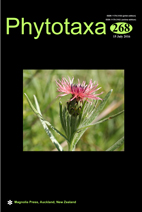Abstract
Two new species, Passiflora splendida and P. quinonesiae of the section Colombiana from the Andes of Cundinamarca Department (Colombia Eastern Cordillera) are described and illustrated. Passiflora splendida is morphologically similar to P. cremastantha of the series Leptomischae, but can be distinguished by its linear stipules, petioles up to 1.8 cm long, lance-ovate leaves (6–8.5 × 2.5–3.3 cm), flowers with a diameter of 9–11 cm long, sepals and petals with intermediate disposition, both longer than the floral tube, floral tube of 3.2–4.5 cm long and fusiform ovary. Passiflora quinonesiae is similar to the species of series Colombianae, most closely related to P. cuatrecasasii and P. lanata. It differs from P. cuatrecasasii by its terete stem, size of the leaves 4.4–15 × 10.3 cm, elliptic bracts and floral tube 5.2–6 cm long. It differs from P. lanata by its ovate leaves, bracts halfway down the floral tube, elliptical sepals and petals, and elliptical ovary. In addition, a taxonomic key to section Colombiana ser. Colombianae and Leptomischae for Colombia is included and information about the ecology, distribution, and conservation status of P. splendida and P. quinonesiae are discussed.

